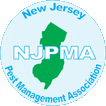Houseplants bring life and color inside our homes, but something else they can bring is unwanted pests. Certain types of insects thrive on indoor conditions and the nutrients that houseplants provide, putting your beautiful leaves and flowers at risk. For purposes of house plant bugs identification, here are the most common types of indoor plant bugs and how to rid your home of them.
Spider Mites
Spider mites are common in New Jersey and a type of arachnid that are very tiny and often go unnoticed to the human eye. They eat plant matter to survive and may leave tiny spots or tight webs behind under the leaves. These pests usually live in colonies under leaves, which will turn yellow and fall off after being feasted on by spider mites.
Aphids
Aphids are among the most common indoor plant bugs, which are about 1/8-inch long, have pear-shaped bodies and secrete a sticky fluid as they feed on plants. Most aphids don’t have wings, but they do have two antennae on their heads and cornicles projecting from their backsides. Plant leaves affected by aphids will develop a black mold growth because of this fluid, which is called honeydew.
Scale Insects
Scale insects are common on houseplants, as well as on outdoor trees and shrubs. Some have a hard shell that serves as protection, while others are categorized as soft and release a waxy substance. These indoor plant bugs range from ½ inch to 1/8-inch long and cause plant leaves to turn yellow and die.
Whitefly
Whiteflies are commonly found around plants in homes and greenhouses, and these pests eat sap from the undersides of leaves. They look like moths, are about 1/16-inch long, and have white wings that are easy to recognize. Whiteflies are particularly fond of poinsettias, tomato plants, and citrus plants.
Getting Rid of Tiny Bugs in Soil of Houseplants
Many homeowners start with DIY solutions and natural remedies when they notice indoor plant bugs, and some of these strategies are quite effective. For example, you can spray a mixture of an ounce organic neem oil with a gallon of water on houseplants to control houseplant bugs. Other methods involve wiping infested leaves with a mixture of dishwashing soap with water and also using a cotton swab dipped in rubbing alcohol to spot-treat portions of leaves that have been affected by pests.
If these DIY approaches don’t work, then it may be time to call in the professionals to save your houseplants and prevent them from moving elsewhere in your home. Precise Pest Control has been keeping New Jersey pest-free for over 25 years and specializes in the types of indoor plant bugs that affect our region. If you suspect pests eating your houseplants, contact us today for a free inspection.





